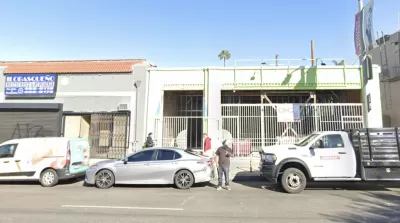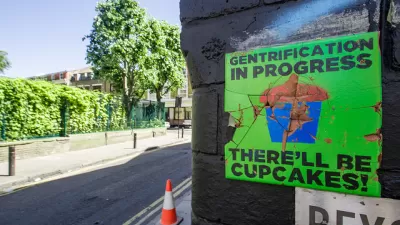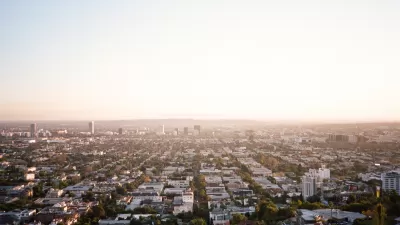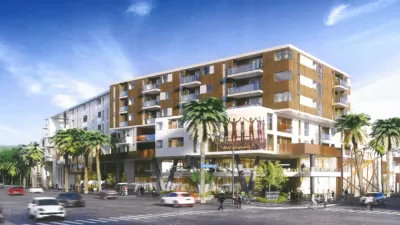New art galleries are moving into a neighborhood recently dubbed ‘Melrose Hill,’ prompting both derision and concern on the part of local residents.

Writing in Hyperallergic, Matt Stromberg calls out the new art galleries popping up in a Los Angeles neighborhood being billed as ‘Melrose Hill’ for claiming to ‘revitalize’ an area that never lost its vitality to begin with. “In fact, ‘desolate’ was precisely the word used to describe the area in a Vanity Fair article last month on the recent influx of galleries to the block, which drew immediate and sharp criticism from Angelenos who know better.”
As Stromberg explains, “The phenomenon of a neighborhood being re-branded by developers, often aided by Google Maps, to present an area as a kind of ahistorical blank slate is nothing new.” Stromberg adds, “There is, in fact, a neighborhood called Melrose Hill, just not where these new art spaces are located.” The real Melrose Hill includes a Historic Preservation Overlay Zone (HPOZ) that protects 45 historic California bungalows.
As for the ‘desolate’ neighborhood in question, “Residents are overwhelmingly renters, with low to average median incomes for the city. Once you move off the main commercial and transit arteries of Western and Melrose, the streets are filled with low apartment buildings, single-family homes, and courtyard housing, originally built by Hollywood studios to house their workers.”
Longtime community members express concern that the galleries have not conducted public outreach or attempted to integrate themselves into the existing community while bringing hundreds of cars crawling the neighborhood for parking to gallery events. The pattern is familiar for L.A. neighborhoods, which regularly undergo ‘rediscovery’ and gentrification. “Large sections of LA have been transformed by development and gentrification over the past 20 years, but the speed at which it is taking place here seems exceptional.”
FULL STORY: Art Galleries Are Not Reviving a “Desolate” LA Neighborhood

Manufactured Crisis: Losing the Nation’s Largest Source of Unsubsidized Affordable Housing
Manufactured housing communities have long been an affordable housing option for millions of people living in the U.S., but that affordability is disappearing rapidly. How did we get here?

Americans May Be Stuck — But Why?
Americans are moving a lot less than they once did, and that is a problem. While Yoni Applebaum, in his highly-publicized article Stuck, gets the reasons badly wrong, it's still important to ask: why are we moving so much less than before?

Using Old Oil and Gas Wells for Green Energy Storage
Penn State researchers have found that repurposing abandoned oil and gas wells for geothermal-assisted compressed-air energy storage can boost efficiency, reduce environmental risks, and support clean energy and job transitions.

Minneapolis Bans Rent-Setting Software
Four cities have enacted restrictions on algorithmic software that can inflate rent costs.

Oakland to Add 244 New EV Chargers
Oakland plans to launch its new charging network at eight locations by the end of 2025.

Jane Goodall Inspires with Message of Hope, Resilience, and Environmental Action
Speaking in Pasadena, Jane Goodall offered a hopeful and inspirational message, urging global compassion, environmental responsibility, and the power of individual action to shape a better future.
Urban Design for Planners 1: Software Tools
This six-course series explores essential urban design concepts using open source software and equips planners with the tools they need to participate fully in the urban design process.
Planning for Universal Design
Learn the tools for implementing Universal Design in planning regulations.
Heyer Gruel & Associates PA
City of Moreno Valley
Institute for Housing and Urban Development Studies (IHS)
City of Grandview
Harvard GSD Executive Education
Salt Lake City
NYU Wagner Graduate School of Public Service
City of Cambridge, Maryland





























